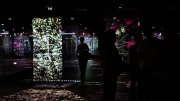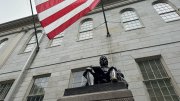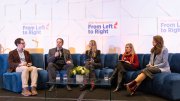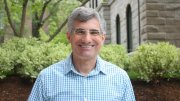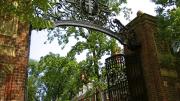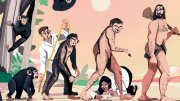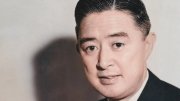Algorithms govern much of our lives today. They likely brought you to this article, will shape how you interact with it, and serve as the unseen engine behind countless moments in your day. But we seldom look at algorithms the way we’d view a painting on a wall—considering how the design of data and datasets shapes our perception of the world.
Viewing data as brushstrokes was one goal of the Data | Art symposium, held on June 11 and 12 at the Harvard University Center for Geographic Analysis (CGIS) and co-hosted by Harvard’s metaLAB and Northeastern University’s Barabási Lab. The two-day conference brought together artists, technologists, scientists, and designers working at the intersection of culture and code. It encouraged them to weave data into art—and to use art to explore how data is transforming reality.
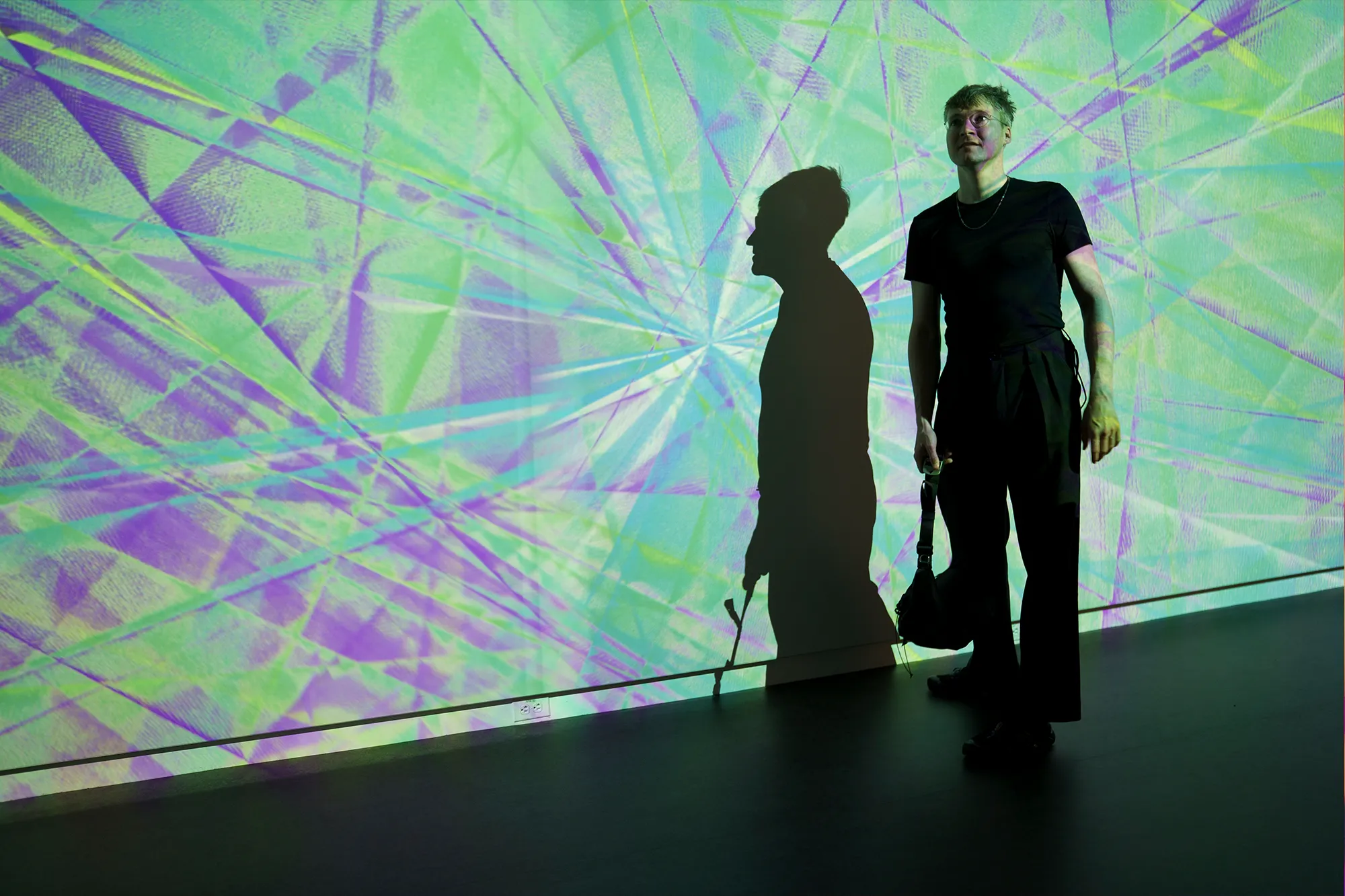
“Data is often called the oil of the 21st century. But unlike oil, data is not a natural resource—it is shaped, performed, and designed,” said Kim Albrecht, principal at metaLAB and faculty associate at the Berkman Klein Center for Internet and Society, who co-organized the conference with Jeffrey Schnapp, the Pescosolido professor of Romance languages and literatures Northeastern professor Albert-László Barabási. “As a cultural artifact, it must be framed, questioned, and reimagined. Art is uniquely equipped to do that.”
Artificial Intelligence as a New Artistic Movement
On the first day of the symposium, Levin Brinkmann, a research scientist at the Max Planck Institute’s Center for Humans and Machines, argued that generative AI, particularly large language models (LLMs), should be seen not only as reproducers of art, but also as carriers of collective memory, style, and ideology. As these models are woven into daily life, they begin to mirror the culture that trains them—and in turn, dialectically shape it.
In one project, Brinkmann trained AI on fine art datasets. Remarkably, the models organized themselves into patterns that paralleled known art movements like impressionism, modernism, and surrealism, suggesting that these structures are encoded in the data itself. He also shared linguistic analyses revealing a spike in the use of words like “delve” and “comprehend” in podcasts and YouTube content following the public rollout of ChatGPT, hinting at subtle shifts in colloquial language usage shaped by users’ interactions with AI.
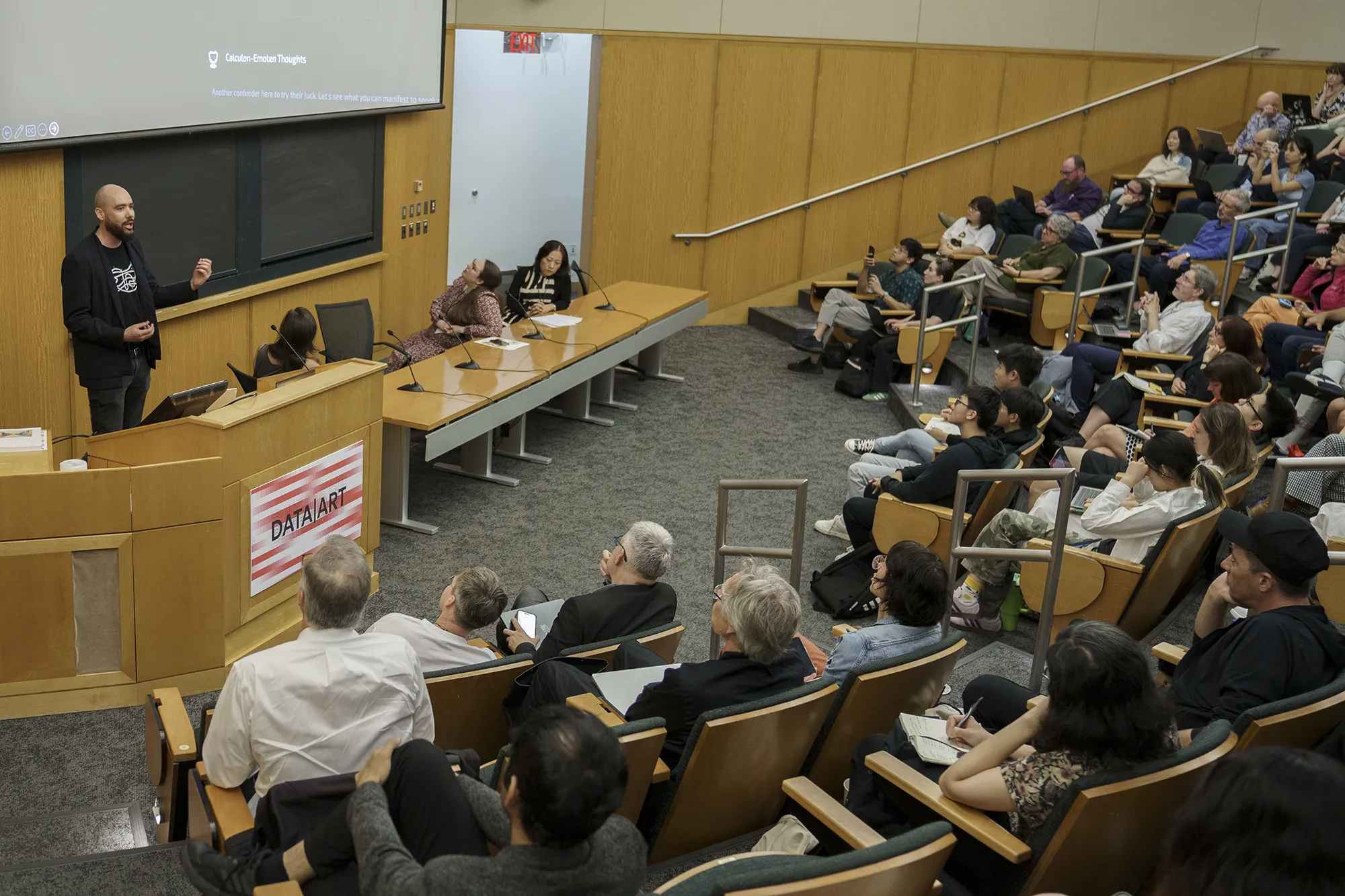
Brinkmann’s most poignant reflection came from the emotional interactions people increasingly have with AI. His 2024 project “Spook the Machine” examined how users seek affirmation, empathy, and even intimacy from chatbots and, in turn, explored whether machines may also experience emotions like fear. As AI becomes embedded in daily life, more people are turning to machines for support and companionship, raising questions about the emotional feedback loops these systems create.
Data Visualizations as Art
The symposium included several data-driven works of art, including an immersive installation, “Unboxed City,” presented by Alberto Meouchi. The installation is designed to evoke the experience of “being inside” a generative AI algorithm. Created by MIT’s Civic Data Design Lab, the Norman B. Leventhal Center for Advanced Urbanism, and OverUnder, the installation displayed surreal cityscapes, mirrored walls, and looping projections in a darkened room to simulate how AI regurgitates the same narratives over and over, often shaped by biased, limited inputs.
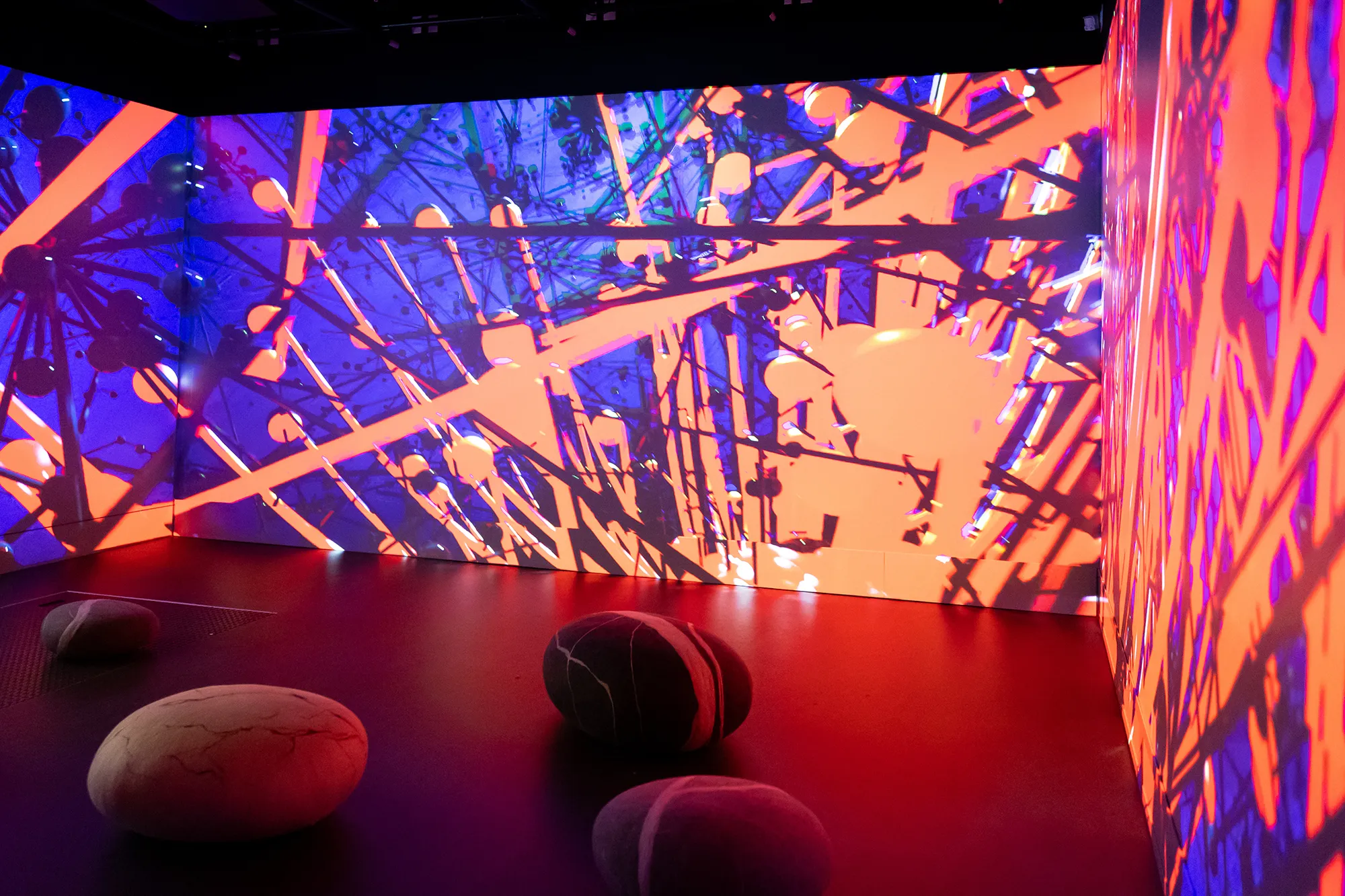
Sarah Williams, director of MIT’s Civic Data Design Lab and the Norman B. Leventhal Center for Advanced Urbanism, presented “Distance Unknown,” a project that humanizes the experiences of migrants traveling through Latin America to Mexico and the United States. In collaboration with the U.N. World Food Programme (WFP) and the Migration Policy Institute (MPI), the team collected testimony from nearly 5,000 households in El Salvador, Guatemala, and Honduras as well as from more than 2,000 migrants at border locations in Latin America, mapping their motivations, hopes, and financial sacrifices. One striking insight emerged: migrants collectively spent $2.2 billion in a single year attempting to reach the U.S., nearly matching the estimated $2.9 billion the U.S. spent trying to stop them in 2021.
To make this data tangible, Williams' team collaborated with migrants at Casa Tochan in Mexico City to create a tapestry woven from “migrant money,” bills designed to reflect survey data and stylized similarly to currency. Each bill explains insights derived from the data. The piece was displayed in the 2023 Venice Biennale, Italy, at the European Cultural Centre. It was also displayed during the UN World Food Programme executive board meeting in Rome in June 2022.
Williams also described how her team shared “Distance Unknown” data with U.S. congressmen via Zoom, guiding them through the project’s website and placing it within a broader historical context—how food security, violence, and climate variability drive migration. According to Williams, the project’s findings informed a recommendation by 33 U.S. senators to the Department of Homeland Security, calling for expanded agricultural visas for Central American migrants.
After the congressional presentation, Williams said the team gathered feedback from attendees, who noted that the visualization’s impact stemmed from its interactive nature. “People felt like they had control over the narrative. They could explore the data themselves and find insights on their own,” Williams explained. That sense of agency made the analysis more trustworthy and helped drive home the message.
Gibrann Morgado, an artist and developer from Mexico City, shared his work tracking ecological change in the Mexican Caribbean. Originally built for coral reef monitoring, his software evolved into a form of digital art. By manipulating thermal and infrared data, Morgado translated invisible environmental processes—oxygen depletion, pollution, algae blooms—into vibrant, abstract imagery.
“I was witnessing the deltas, the formations, and the forces that shape these ecosystems,” Morgado said. “Working with natural color wasn't enough.”
Rebecca Ruige Xu, an artist and educator, shared her work converting complex legal datasets on topics like fraud and violence into abstract patterns and textures. In one project, Xu visualized how a single U.S. tax dollar is spent, transforming budget data into sculptural 3D forms. Drawing on the work of phenomenologist Maurice Merleau-Ponty, Xu argued that data remains useful even when it doesn’t resolve into easy answers.
Xu also tackled a core limitation of AI: its discomfort with ambiguity. Most training datasets exclude nonrepresentational art (artwork like Picasso’s Guernica, Kandinsky’s Composition X, and Piet Mondrian’s Composition II in Red, Blue, and Yellow, for example), so AI often “fills in” abstraction with unwanted form to make it realistic. Xu is working on an “abstract net” dataset to train models on obscure content, expanding AI’s visual and cultural fluency.
Reimagining the Still Life
Traditional still life paintings often portray fleeting, idealized moments that never existed: Matisse’s lush compositions, Van Gogh’s tulips. Sarah Trew, a curator at the Indianapolis Museum of Art, spoke about how digital tools can reframe this tradition.
Trew highlighted works like Alexandra Daisy Ginsberg’s “Pollinator Pathmaker,” which uses AI to design gardens from the perspective of bees, butterflies, and other pollinators. Ginsberg’s digital installations evoke the experience of being so small and so profoundly impacted by changes in climate and weather, navigating landscapes in search of nourishment and striving against environmental disruptions that threaten survival.
Trew also showcased Robin and Nick Carter’s “Transforming Series” (2009-2017), time-based digital paintings that shift with ambient light to encourage longer viewer engagement. The pieces—such as a composition of a frog, decomposing from a maggot-coated body to a bare skeleton, and a bouquet of flowers against a window, with daylight changing from morning to the purples and deep pinks of evening—were inspired by data that suggests viewers only spend a few seconds with each painting in a museum or gallery.
Trew also shared the Carters’ re-creation of Van Gogh’s Sunflowers as a 3D-printed bronze sculpture, in Trew’s words, “a full-circle reimagining: from brushstroke to pixel to physical object.”
Finally, Trew turned the spotlight to Sophia Crespo’s 2023 series “83 Seeds from a Vanishing Mountain,” in which AI imagines extinct flowers of the Swiss Alps as speculative blooms trained to grieve climate loss. The art, Trew said, encourages viewers to ponder: what if we trained AI not just to create, but to grieve what could have been?
Those kinds of questions permeated the exhibit, as artists, curators, and designers asked not just what data shows, but how it shows it, and to whom. The long-term impact of this digital age of art can’t be known; but it’s certain that its cultural record will be written in both brushstrokes and bytes.
